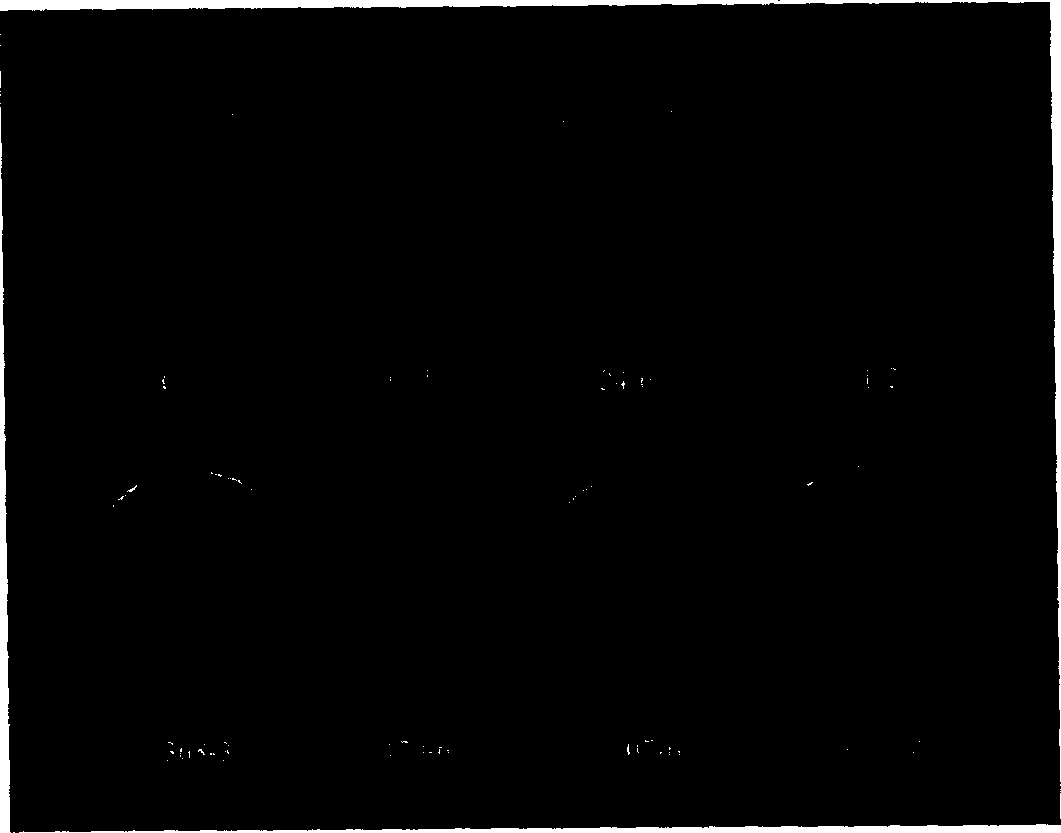Rice grain gelatinization temperature main control gene ALK and its uses
A technology of gelatinization temperature and main effect gene, applied in the field of protein
- Summary
- Abstract
- Description
- Claims
- Application Information
AI Technical Summary
Problems solved by technology
Method used
Image
Examples
Embodiment 1
[0028] 1. Rice material
[0029] Rice (Oryza sativa ssp.) high gelatinization temperature indica variety “Shuangkezao” and low gelatinization temperature japonica variety “Cbao”.
[0030] 2. Analyze and target groups
[0031] The homozygous indica variety “Shuangkezao” was crossed with the japonica variety “Cbao”, F 1 A total of 7068 F 2 Individuals, and 1,352 individuals were selected as the positioning group. Take about 2 grams of young leaves from each plant at the seedling stage to extract DNA.
[0032] 3. Localization of ALK gene by SSR, STS, and CAPS markers
[0033] Genomic DNA for gene mapping was extracted from rice leaves using a modified CTAB method. About 100mg of rice leaves were taken, frozen in liquid nitrogen, ground into powder in a small mortar with a diameter of 5cm, transferred to a 1.5ml centrifuge tube to extract DNA, and the obtained DNA precipitate was dissolved in 100μl ultrapure water. Use 1 μl of DNA sample per SSR, STS or CAPS reaction.
[00...
Embodiment 2
[0043] 1. Cloning of ALK full-length gene sequence
[0044] Primers were designed according to the sequence of the early ALK gene of the indica rice bifamily, and high-fidelity PCR amplification and sequencing were carried out in three segments, the clones with completely correct sequences were selected, and they were connected into a 6.86kb gene by using the shared AgeI site and KpnI site fragment, which contains the full-length sequence of 1,766 bases upstream of the start codon ATG and 677 bases after the stop codon TGA.
[0045] 2. Construction of plant transformation vectors
[0046] Construction of ALK sense transformation vector. The cloned full-length ALK gene was inserted into the binary vector pCAMBIA1300 (CAMBIA Company, Australia) to obtain the plasmid pCAMBIA1300-Alk for transformation ( FIG. 4A ).
[0047] Construction of ALK antisense transformation vector. Using the total RNA of indica Shuangke early as a template, the 0.94kb fragment was amplified by RT-PCR...
Embodiment 3
[0049] Rice Genetic Transformation Experiment and Results
[0050] 1. Transformation acceptor material
[0051] Japonica rice: Cbao, Chunjiang 06 Indica rice: Shuangkezao, Minghui 63
[0052] 2. Agrobacterium strains and target genes
[0053] Agrobacterium strain: EHA105
[0054] Target gene: Alk (sense gene), Anti-Alk (antisense gene)
[0055] 3. Culture medium: commonly used medium for rice tissue culture
[0056] 4. Rice callus induction and subculture
[0057] The immature embryos of japonica rice "Cbao" and indica rice "Shuangkezao" were dehulled and sterilized, and inoculated into the medium for inducing callus. After 3 weeks of culture, the callus grew from the scutellum, and the vigorously growing, light yellow, relatively loose embryogenic callus was selected as the recipient for transformation.
[0058] 5. Agrobacterium infection and rice transformation
[0059] Cbao and Chunjiang 06 were transformed with the sense gene expression vector pCAMBIA1300-Alk; Shuan...
PUM
 Login to View More
Login to View More Abstract
Description
Claims
Application Information
 Login to View More
Login to View More - R&D
- Intellectual Property
- Life Sciences
- Materials
- Tech Scout
- Unparalleled Data Quality
- Higher Quality Content
- 60% Fewer Hallucinations
Browse by: Latest US Patents, China's latest patents, Technical Efficacy Thesaurus, Application Domain, Technology Topic, Popular Technical Reports.
© 2025 PatSnap. All rights reserved.Legal|Privacy policy|Modern Slavery Act Transparency Statement|Sitemap|About US| Contact US: help@patsnap.com



